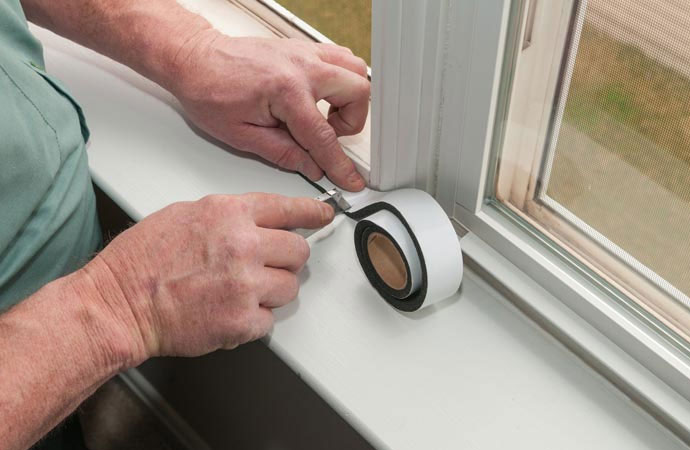In many cases, locating an air leak is fairly easy. Windows and doorways are well-known producers of drafts. Other times, finding a draft may take a bit more work. Attics and basements often harbor leaks that are less obtrusive yet still cause problems. Leaks are often found in knee walls, the walls that typically support rafters in an attic. Furnace ducts and attic openings are also common sources of air leaks. Holes for electrical wiring and plumbing can cause problems as well. In the basement, leaks are particularly plentiful where the house foundation meets wooden framing.
Closely inspecting these problem areas can help identify where drafts are coming from. A simple smoke test can also help pinpoint leakage points. This simple test involves closing all doors and windows and turning off all appliances. Near common leakage points, light an incense stick and observe the behavior of the smoke. Normally, the smoke will rise straight into the ceiling. If the smoke wavers or flows erratically, there is a nearby air leak. While laypeople can find many leaks, it is often helpful to seek professional inspectors to locate draft sources that are more elusive in nature.
After finding air leaks, sealing these leaks can be a simple procedure. Spray foam and sealing caulk are fairly affordable solutions. These materials are used to seal stationary parts of the home. Experts recommend caulk for holes that are up to half of an inch in diameter. Spray foam is ideal for larger gaps of up to three inches.
To seal movable fixtures like doors and windows, simply use weatherstripping. It is worth noting that air sealing can unhelpfully trap gases in the home. Rarely, gases that are harmless in small amounts can collect to dangerous levels. HVAC professionals can inspect homes for potential problems in this area. Clean and operable air duct systems are critical for maintaining safety, comfort and energy efficiency.













